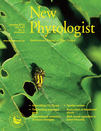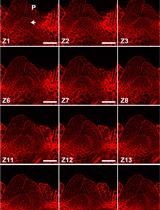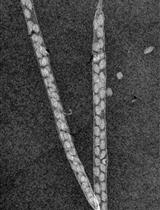- EN - English
- CN - 中文
Pollen Germination and Pollen Tube Growth of Arabidopsis thaliana: In vitro and Semi in vivo Methods
体外及半体内实验方法研究拟南芥花粉发芽及花粉管的生长
发布: 2018年08月20日第8卷第16期 DOI: 10.21769/BioProtoc.2977 浏览次数: 15721
评审: Samik BhattacharyaIgor CesarinoAnonymous reviewer(s)
Abstract
Studies of pollen germination and post-germination development are not only essential for understanding plant reproduction but also are an excellent model system for tip-based growth. Here we describe easy, reproducible methods for germination and growth of pollen from the model plant Arabidopsis thaliana in artificial conditions. Our growth system can be used both for pollen placed directly on this artificial substrate as well as for the so-called ‘semi in vivo’ method. This is where a pistil is cut shortly after hand-pollination and the pollen tubes grow through the plant tissue and emerge from the cut end onto the surface of the artificial medium.
Keywords: Arabidopsis thalian (拟南芥)Background
The pollen of flowering plants is widely used as a model system for rapid, tip-based growth. Naturally, studies of pollen biology are also essential for understanding plant fertility and reproductive development. However, a simple and reliable method for germinating pollen from the model plant Arabidopsis thaliana and sustaining rapid, morphologically normal pollen tube growth in vitro has been frustratingly elusive. Prior to developing our own method (Rodriguez-Enriquez et al., 2013), described here, we attempted to replicate several published methods, but after numerous attempts we failed to generate satisfactory results. For instance, replicating Boavida and McCormick’s method in the lab was difficult as it has a remarkably narrow temperature optimum (22 °C) and this is a situation that clearly does not reflect the reproductive biology of A. thaliana in vivo (Boavida and McCormick, 2007). Furthermore, there are issues with germination rate and local pollen density in this method that also do not entirely reflect natural events on the stigmatic surface. Our first clue that there were key ‘missing factors’ necessary for reliable pollen germination in vitro came from observations that placing stigmatic surfaces of A. thaliana on such artificial media stimulated high levels of pollen germination in the region around the stigmatic surface. This happened even when the pollen grains were not in any direct contact with this plant tissue. Subsequently, experimental work established that two factors were particularly important (Rodriguez-Enriquez et al., 2013). Firstly, the use of cellulosic membrane on the surface of the agarose-based medium–which likely acted to mimic the ‘dry stigma’ environment that A. thaliana pollen encounters in vivo. Secondly, we discovered that the polyamide spermidine is a potent stimulant of pollen germination. We also found several other factors that contribute to the success and reproducibility of the experiments (Rodriguez-Enriquez et al., 2013). Below, we describe in detail a step-by-step method for in vitro germination of pollen from A. thaliana Columbia (Col) and Landsberg erecta (Ler) ecotypes, the two commonly used lab ecotypes.
After our study was published, several groups have employed our method in experimental work on A. thaliana (Waterworth et al., 2015; MacAlister et al., 2016; Rottmann et al., 2016). Intriguingly, by using a modified version of our system, Rottmann et al. (2016) proved that our medium could support pollen tube growth emerging from the severed end of pollinated pistils where the style had been cut and the tissue laid on the medium. Previously, Qin et al. (2009) had achieved this “semi in vivo” growth technique using a different medium and demonstrated that pollen tube growth through the style elicited a novel transcriptome when compared with pollen grains grown in vitro at a comparable developmental stage. Here, we confirm that this technique works well with our novel medium first described in Rodriguez-Enriquez et al. (2013), and give a step-by-step protocol to permit its replication. This technical modification might be useful to study a number of processes. For example, it allows the evaluation of whether maternal factors on the stigmatic surface and style affect pollen germination and pollen tube growth rates, as the number of pollen tubes and the timing of their emergence can be visualized and quantified.
Materials and Reagents
- Materials
- Glass microscope slides
- Falcon tubes
- Glass pipettes
- Cellophane membrane (Cellulose) (Innovia Films, catalog number: 325P )
- pH indicator strips:
Paper DOSATEST, pH 0-14 (VWR, catalog number: 35309.606 )
DOSATEST, pH 7-14 (VWR, catalog number: BDH35312.607 )
- Plant material: Arabidopsis thaliana
Notes:- We use Arabidopsis thaliana plants grown under standard environmental glasshouse conditions for this species, at 25 °C and where necessary with supplemental lighting (optimally, by high-pressure sodium grow light bulbs) to maintain conditions of 140 μmol•m-2•sec-1 with a 16 h day length. Inferior levels of illumination were associated with much poorer levels of pollen germination in our experience. Plants were grown in a 4:1 ratio of multipurpose peat-based compost to horticultural vermiculite. Plant quality is paramount for consistency in these experiments.
- To maintain good plant growth, we were careful not to grow the seedlings at high or even medium densities in the pots (normally 3-5 plants in a 9 cm diameter pot). It is better to sow seeds in situ, if possible, and to thin out the seedlings to this small number as soon as they appear.
- It is essential never to water overhead when flowering as irrigating in this way will increase the probability that pollen in opening flowers is rendered inviable due to rupturing of pollen grains. We ensure that plants are watered well by placing the pots in plastic seed trays without holes and keeping up to 2 cm of water in the bottom of the tray.
- We like to add a small amount (c. 0.75 g) of slow release Osmocote fertilizer to the tray to guarantee the plants have a constant supply of nutrients.
- It is very important to harvest the flowers for pollen germination in the correct developmental stage, for consistency. Only plants that had already progressed into flowering and just started to develop seed pods (siliques) on the main inflorescence axis should be used. It is also most important to avoid using the pollen from older plants that have started to exit the flower production process (i.e., those with fewer unopened flower buds than siliques and mature flowers), since they have a dramatically declining percentage of pollen germination.
- Chemical reagents
Note: All of the following are stored at room temperature unless otherwise stated.- Agarose (e.g., Molecular Grade, Bioline, catalog number: BIO-41025 )
- Boric acid (Sigma-Aldrich, catalog number: B9645 )
- Calcium chloride (Sigma-Aldrich, catalog number: C1016 )
- Calcium nitrate (Sigma-Aldrich, catalog number: C1396 )
- Casein enzymatic hydrolysate (N-Z-Amine A) (Sigma-Aldrich, catalog number: C0626 ), stored at 4 °C
- Distilled, autoclaved water
- Ferric ammonium citrate (Sigma-Aldrich, catalog number: F5879 )
Note: Deliquescent and light sensitive, ensure storage in a tightly sealed light-proof container. - Gamma amino butyric acid (GABA) (Sigma-Aldrich, catalog number: A2129 )
- Myo-inositol (Sigma-Aldrich, catalog number: I5125 ), stored at 4 °C
- Potassium hydroxide
- Spermidine (Sigma-Aldrich, catalog number: S0266 )
Note: Store at 4 °C; spermidine is highly hygroscopic and air-sensitive so always ensure that the lid is very well sealed. - Sucrose (Sigma-Aldrich, catalog number: S9378 )
- Standard solution (see Recipes)
- Sucrose stock solution
- Boric acid stock solution
- Calcium chloride stock solution
- Calcium nitrate stock solution
- Potassium chloride stock solution
- Casein enzymatic hydrolysate stock solution
- Ferric ammonium citrate stock solution
- Myo-inositol stock
- Spermidine stock
- GABA stock
Equipment
- PAP Pen (e.g., Liquid Block Super PAP pen; Daido Sangyo Saitama, Japan)
- Microscope slide boxes
- Water bath or dry heat block
- Temperature controlled oven
- Pipettes
- Tweezers
- Scalpel/razor blade
- Fine scissors
- Small glass beaker
- Microwave
- Photomicroscope, with multiple lenses and camera unit
- Hand-held counter
Software
- ImageJ software
Procedure
文章信息
版权信息
© 2018 The Authors; exclusive licensee Bio-protocol LLC.
如何引用
Dickinson, H., Rodriguez-Enriquez, J. and Grant-Downton, R. (2018). Pollen Germination and Pollen Tube Growth of Arabidopsis thaliana: In vitro and Semi in vivo Methods. Bio-protocol 8(16): e2977. DOI: 10.21769/BioProtoc.2977.
分类
植物科学 > 植物发育生物学 > 形态建成
发育生物学 > 细胞生长和命运决定 > 发芽
您对这篇实验方法有问题吗?
在此处发布您的问题,我们将邀请本文作者来回答。同时,我们会将您的问题发布到Bio-protocol Exchange,以便寻求社区成员的帮助。
提问指南
+ 问题描述
写下详细的问题描述,包括所有有助于他人回答您问题的信息(例如实验过程、条件和相关图像等)。
Share
Bluesky
X
Copy link












